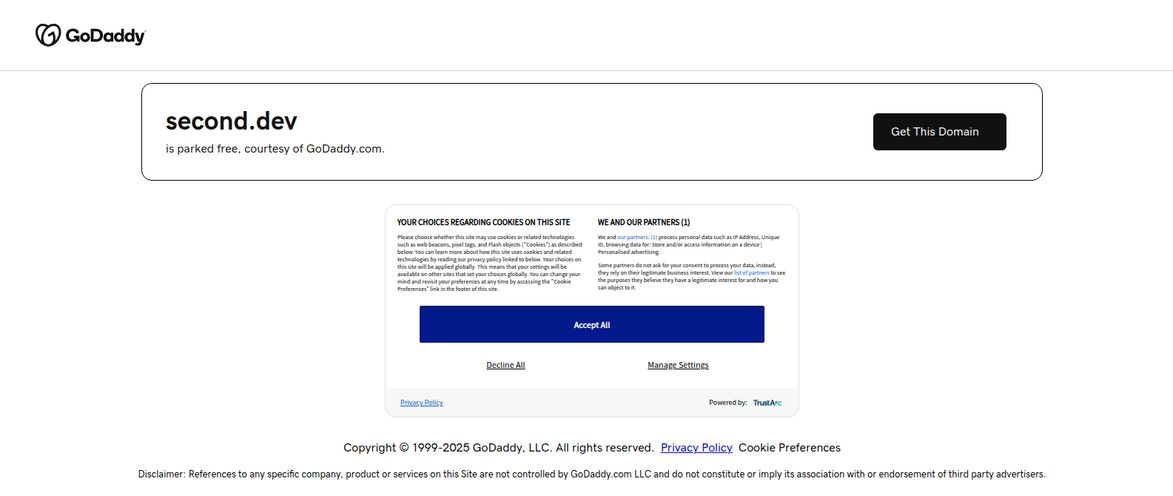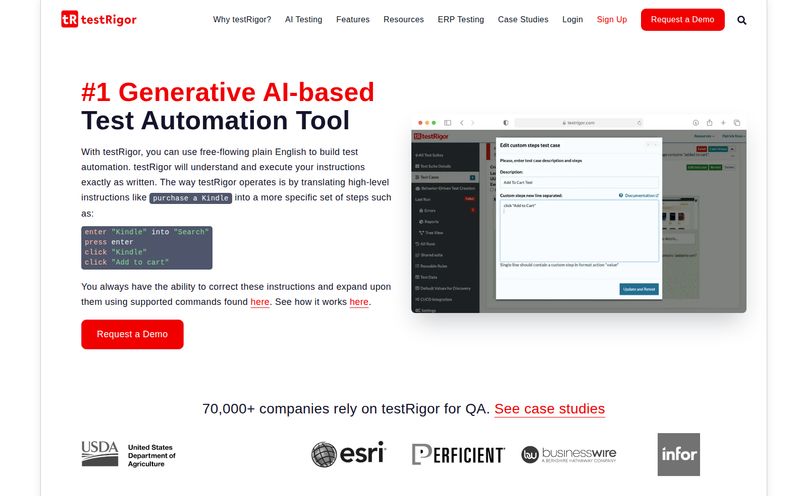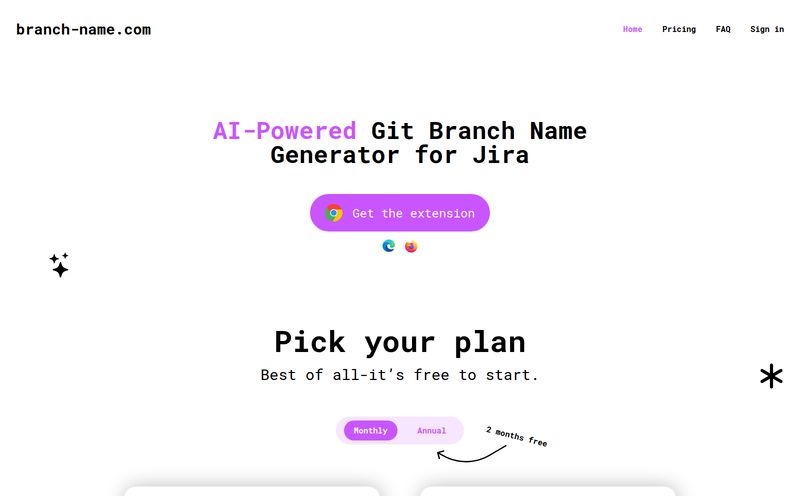Another day, another AI tool promising to change the world. My inbox is a graveyard of these promises. We've all seen the mind-blowing demos from Google's Veo, OpenAI's Sora, and others. It's exciting stuff, no doubt. But for those of us in the trenches—the developers, the product managers, the people actually trying to build functional applications—the question isn't "Wow, look at that!" It's "Okay, but how can I use that?"
Every now and then, something cuts through the noise. Not because it has the most viral demo, but because it’s built for the people actually building things. That’s the vibe I got when I first started poking around the Veo2 API. It’s not trying to be the next TikTok filter; it’s positioning itself as a serious, developer-first platform for integrating AI video generation. So, is it just another shiny object, or is this a genuine tool that can save you time, money, and a whole lot of infrastructural headaches? Let's get into it.
So, What Exactly is Veo2 API?
At its heart, Veo2 API is a professional video processing and generation service made for developers. Forget user-friendly drag-and-drop interfaces for a moment. This is about raw power delivered through code. It gives you the ability to programmatically manipulate and create video content, leveraging their AI models, specifically the 'Veo2 Model' mentioned in their plans.
Think of it less like a shiny, consumer-facing magic wand and more like a professional-grade power drill. It won’t design the house for you, but it gives you the power to build things you simply couldn’t with a hand-crank. You get a set of powerful, easy-to-integrate APIs to plug directly into your own applications, websites, or workflows. It's the engine, not the entire car.
The Core Features That Developers Will Actually Care About
Generic feature lists are boring. Let's talk about what these features actually mean for a project.
A RESTful API That Speaks Your Language
For any developer, a clean, well-documented RESTful API is like finding a well-organized toolbox in a messy garage. It's a relief. Veo2 API offers just that, which means integration should be relatively straightforward for anyone familiar with basic web requests. No weird proprietary protocols to learn. This drastically lowers the barrier to entry for any dev team looking to experiment.
Comprehensive SDKs for Less Boilerplate
Speaking of making life easier, they offer SDKs (Software Development Kits) for multiple programming languages. This is a huge plus. It reminds me of a project years ago where we had to wrestle with a poorly documented API for a different service. We spent more time writing wrapper code and reverse-engineering its quirks than building our actual product. A good SDK is an act of mercy from one developer to another, and it shows Veo2 API understands its audience.

Visit Veo2 API
Real-Time Processing and Scalable Infrastructure
This is probably the most important part. A cool AI demo is one thing, but can it handle load? Veo2 API is built on a scalable cloud infrastructure designed for “massive concurrent requests.” This is the make-or-break feature that separates the toys from the professional tools. If you're building an app where users can generate video content on the fly, you can't have them waiting five minutes for a result. You need speed and reliability, and that’s what a scalable architecture promises. It’s the difference between a proof-of-concept and a production-ready service.
The Good, The Bad, and The Code-Dependent
No tool is perfect, right? It’s always a game of trade-offs. The good stuff here is pretty compelling. The fast processing, the developer-friendly SDKs, and the scalability are massive wins. It means a small team or even a solo develeper can add incredibly sophisticated video features to a product without hiring a team of machine learning engineers and DevOps specialists to build and maintain the backend. The inclusion of API usage analytics and enterprise-level support also signals that they're serious about business customers, not just hobbyists.
But here's the reality check. The biggest “con,” if you can call it that, is that it absolutely requires development knowledge. This is not a no-code tool for your marketing intern to whip up a video. You need to be comfortable working with APIs. The other consideration is the reliance on their cloud infrastructure. It's a double-edged sword I've seen a dozen times. On one hand, you don't have to manage the servers, which is a blessing. I remember the nightmare of managing our own media transcoding servers back in the day… I’ll take a reliable cloud API over that headache any time. On the other hand, you're dependent on their uptime and their platform's future. It's a standard trade-off in the age of SaaS and PaaS, but one you have to be comfortable with.
Let’s Talk Money: Breaking Down Veo2 API Pricing
Ah, the pricing page. The place where great ideas often meet a grim reality. I've always found credit systems to be a bit of a love-hate thing. They're flexible, but can sometimes be tricky to predict costs. Veo2 API uses a credit-based model, which seems to be the standard for AI APIs these days. Here’s a simplified breakdown:
| Plan | Price | Credits & Notes |
|---|---|---|
| Free | $0 | A great starting point. You get 200 credits to test the ropes and see if it fits your project. Perfect for personal tests. |
| Weekly | $29.90 | Gives you 3,990 credits. Good for about 20 Veo2 Model generations. Best for short-term projects or a burst of development. |
| Monthly | $159.90 | Provides 25,990 credits per month (about 130 generations). This seems like the standard plan for an application with active users. Includes advanced features. |
| Annually | $569.90 | A massive 106,900 credits for the year (about 534 generations). This is for committed, large-scale applications and includes options for custom integration. |
Note: For the most up-to-date details, you should always check their official pricing page.
The free tier is generous enough to actually build a working prototype, which I appreciate. The weekly plan is an interesting choice, catering to hackathons or quick-turnaround client work. The monthly and annual plans are clearly aimed at businesses building this into their core product. The value really depends on how credit-intensive your specific tasks are.
Who Is Veo2 API Really For?
So after looking at all this, who should be clicking that 'Get Started' button? It's not for everyone. If you’re a solo creator or a small business owner who just needs to make a few marketing videos, a tool like Canva or Descript is probably a much better fit. It's simpler and doesn't require a line of code.
Veo2 API is for the builders. It’s for:
- Tech Startups building the next-gen social media or content creation platform.
- MarTech Companies wanting to automate the creation of personalized video ads at scale.
- Independent Developers who have a brilliant idea for an app that uses generative video.
- Established Companies looking to add cutting-edge video features to their existing software without the massive R&D investment of building it all from scratch.
If you're in one of those camps, this API acts as a massive accelerator.
My Final Take: Is It Worth the Integration?
In my experience, the difference between a good idea and a successful product often comes down to execution speed and the smart use of tools. Building your own AI video generation pipeline is an monumental task. We're talking immense datasets, insane compute costs, and specialized talent that is very hard to find.
Veo2 API effectively lets you bypass all of that. For the right team, this is more than just a tool; it's a strategic advantage. It lets you focus on your unique application logic and user experience, while outsourcing the incredibly complex video AI backend to a specialist.
So, yes. For a developer or a tech-focused company looking to innovate with video, the Veo2 API looks like a very powerful and compelling option. It provides the picks and shovels for the builders in this new gold rush of generative AI.
Frequently Asked Questions about Veo2 API
- Is Veo2 API suitable for someone with no coding experience?
- Honestly, no. It’s an API (Application Programming Interface) service, which means it is specifically designed to be used by developers who can write code to communicate with it. It's not a standalone application with a user interface.
- What is the "Veo2 Model" mentioned in the pricing?
- While not explicitly detailed, the 'Veo2 Model' is almost certainly their proprietary, foundational AI model that performs the video generation. Think of it like OpenAI having GPT-4 as their model; Veo2 API has the Veo2 Model as its engine.
- How does the credit system work?
- You purchase a plan which gives you a certain number of credits. Each action you perform via the API, like generating a video of a certain length or complexity, will consume a set number of those credits. The free plan is a great way to figure out your potential usage rate.
- Can I try Veo2 API before committing to a paid plan?
- Absolutely. They offer a free tier that comes with 200 credits. This is specifically for testing the platform's capabilities and seeing if it's a good fit for your application before you spend any money.
- Is the API fast enough for real-time user applications?
- The platform heavily promotes its real-time processing and high-speed generation capabilities. While 'real-time' can be subjective, it suggests the performance is optimized for interactive applications where users expect a reasonably fast turnaround on their requests.
Conclusion
The world of AI video is moving at a breakneck pace. It's easy to get lost in the hype cycles. But platforms like Veo2 API represent the next, more mature phase of this revolution: making this incredible power accessible and practical. It’s a shift from just watching cool tech demos to actually putting that tech to work. For developers ready to build the future of how we interact with video, this API might just be the most important tool you haven't tried yet.



